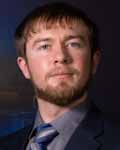Deep Focus: “The Hunchback of Notre Dame”
Upon hearing the title, “The Hunchback of Notre Dame,” one or two concepts come to mind. The first is most likely the animated film released by Disney in 1996. Older audiences might have at least heard of the original novel that this movie was based on.
However, other companies produced different iterations of the classic story, and one version came out in 1939 simply titled, “The Hunchback of Notre Dame.”
At the time, it was considered a remake of the same story from 1923. This first picture was produced by Universal with a future remake discussed later.
However, RKO Radio Pictures bought the rights for the film and began filming at the RKO Encino Ranch.
Much unlike its Disney counterpart, this version begins with words on screen informing the viewers that it is the late 15th century, and the Hundred Years war is over. With peace, France can now progress both socially and industrially.
However, it also tells the central theme of the film, that assumption and superstition can hinder the growing mind.
This was shown early on when Jean Frollo, the Chief Justice of Paris, inspects a printing press at a print shop with King Louis XI. Frollo sees the device for what harm it could cause while the king sees it as the start of a new age.
Following this is a gathering of gypsies for the feast of fools, who must have a permit to enter the city or face prosecution. The audience is introduced to Esmeralda here and eventually, Quasimodo.
Other notable individuals that first appear here include Pierre Gringoire, a poet, and Clopin, king of the beggars.
Much of what followed was what many have seen before, Quasimodo was crowned the king of fools and got taken back to Notre Dame by Frollo. Esmerelda runs to the cathedral for sanctuary and stumbles into Frollo in the building as well as Louis.
She then ran out and was pursued by Quasimodo, who was arrested by Captain Phoebus, who in turn fell in love with Esmerelda.
One of the biggest changes from the book to this film were the roles of the Frollo brothers.
Both characters changed from their literary counterparts, which ensured that the film satisfied the Hays Production Code.
Since Claude Frollo is the archdeacon, keeping him as the villain would violate the policy. To work around that, Jean Frollo received the trait.
This means that the lust for Esmerelda and jealousy toward Phoebus was his.
There are major differences in the story from what Disney portrayed in 1996. For starters, Quasimodo is deaf, which makes sense being a bellringer and that leads to many misunderstandings.
Also, after the feast of fools, the gypsies pool their earnings in the court of miracles and punish those who did not share their pull.
When Notre Dame was attacked, it was the gypsies that engaged in the assault. Also, the reason for the siege was because the protection of sanctuary and by proxy Esmerelda was at risk of elimination.
The biggest difference is that the story focuses more on Esmerelda and Jean Frollo than Quasimodo.
Charles Laughton played the title character. Whose makeup and costume really did an astounding job of transforming him into the hunchback.
Esmerelda was portrayed by Maureen O’Hara in one of her earliest roles. Cedric Hardwicke conveys both power and timidness as Frollo while Walter Hampden appears both wise and caring as the Archdeacon.
The film was nominated for Best Music and Best Sound and received positive reception from critics and audiences. But its hefty production costs reduced its earnings for the company, which included building a detailed 190-foot-tall replica of the Notre Dame cathedral.
From a modern perspective, “The Hunchback of Notre Dame” from 1939 serves as a decent mixing of the original story published almost a century prior. Somewhere in-between the original and the animated 1996 version.
It had a more positive ending like the Disney adaptation but included more characters from the book and presented a story closer to what Victor Hugo intended.
David Myers is a junior majoring in telecommunications. To contact him, email at d12amyers@gmail.com









